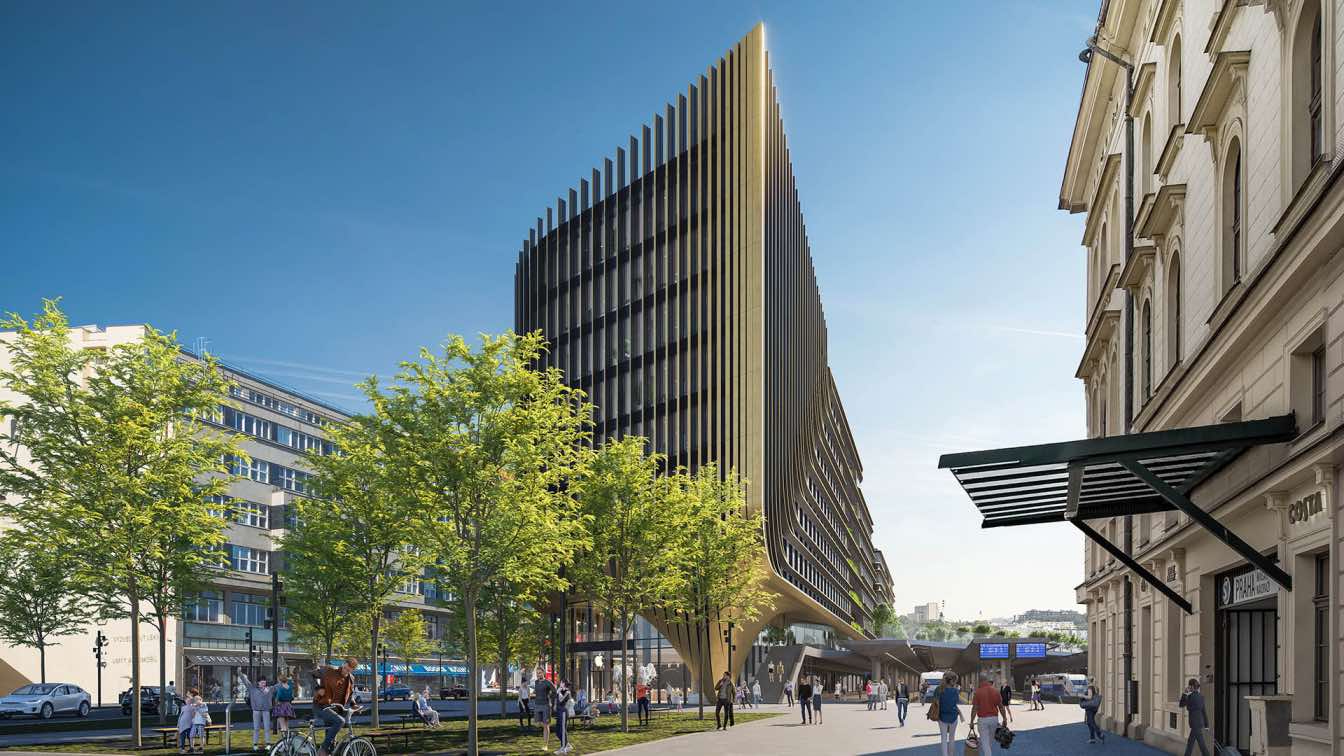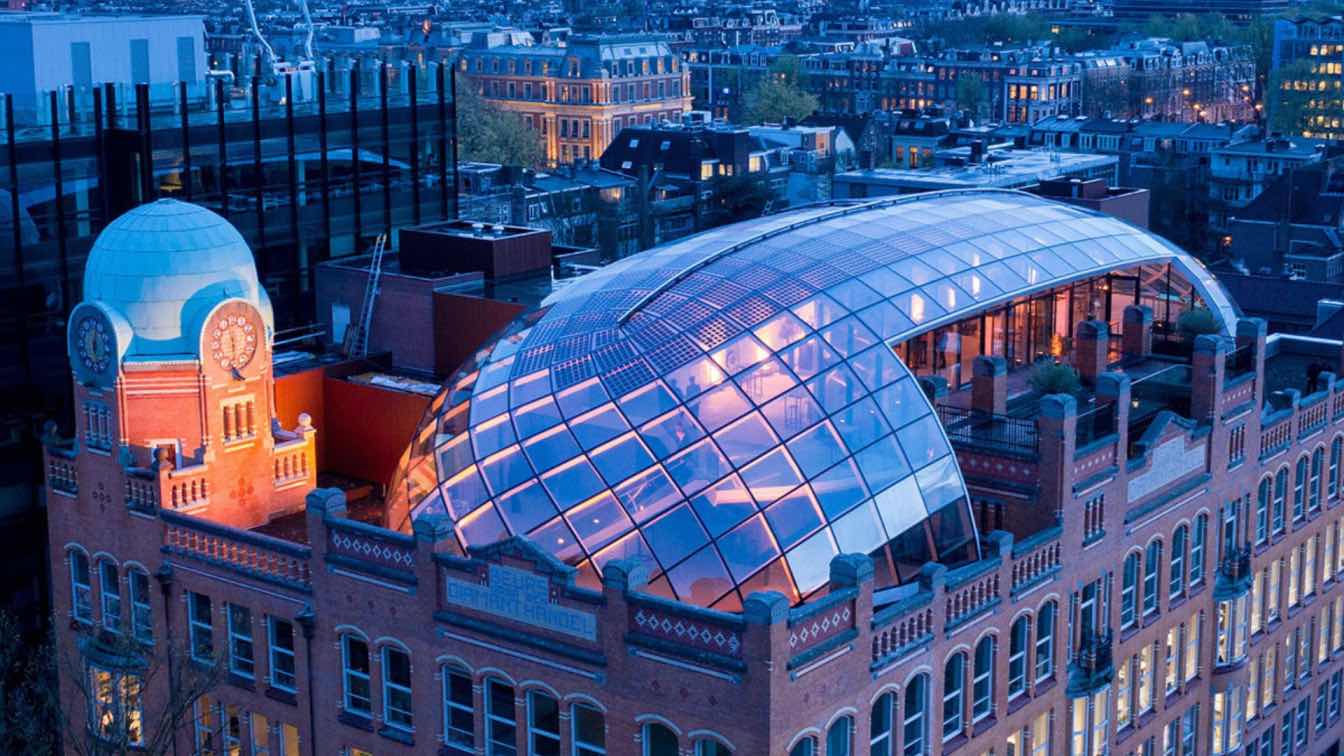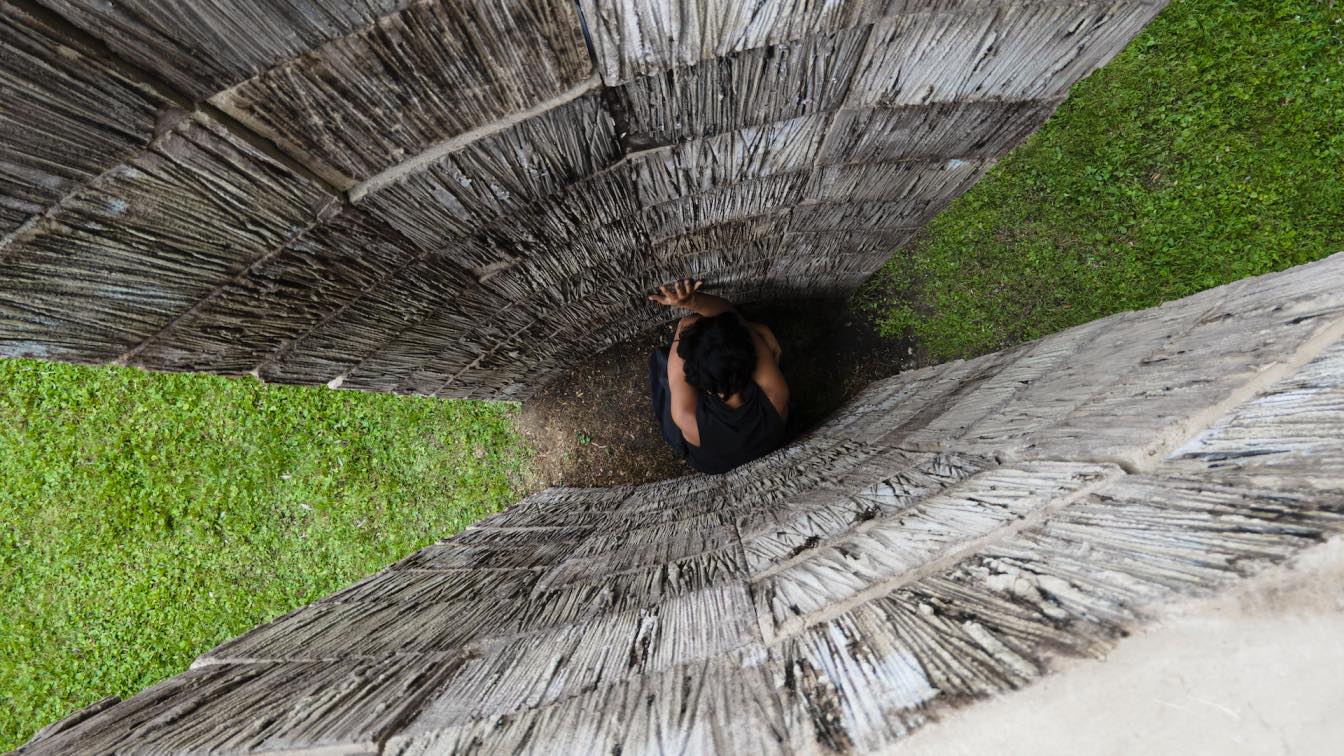Suspended in the heart of one of the world’s most prestigious retail spaces—Dubai Mall—Edyta Barańska’s stunning glass installation becomes a poetic interplay of light, movement, and architecture. Designed by the artist and her studio, Barańska Design, the shimmering cloud of glass birds seamlessly integrates with the dome’s transparent architecture, becoming part of a dynamic dialogue with its surroundings.
From concept to a landmark realization
The story began several years ago, through a collaboration with Art in Public Space, a company that introduces art into public areas in Dubai. At the time, Edyta Barańska—known for her work with art glass—had no idea her next project would become one of the largest glass installations of its kind in the region. When Art in Public Space resumed cooperation with Dubai Mall’s developer, Emaar Properties, they asked whether she could create a new, exceptional piece for the glass dome in the newly revitalized area known as The District.
Several studios from around the world joined the competition. “We proposed fused glass in delicate, organic birdlike forms. We prepared prototypes and presented them to the interior designer responsible for the visual language of Dubai Mall,” Edyta recalls. These prototypes were selected and presented to the owner. Once approved, the long and complex design process began.
The choice of birds as the motif was no coincidence. In Arab culture, birds—alongside horses—hold deep symbolic meaning, rooted in tradition and local imagination.
“Although many associate Arab countries primarily with camels, horses and birds, especially falcons, are far more revered,” says Edyta. “Falcons appear in many iconic depictions, often found in homes and offices as symbols of prestige, strength, and freedom.”

An installation in perfect balance
One of the key design requirements was for each bird to remain level—never tilting or swaying. “They had to ‘fly’ evenly beneath the dome, forming a calm, orderly composition,” Edyta explains. Just as important was the visual axis leading the viewer’s gaze toward Burj Khalifa. “The client wanted the view upward to express both the delicacy of the installation and the majesty of the tower. It had to be a unified, meaningful experience,” she adds.
In a place as iconic as Dubai Mall, the bird symbol fits perfectly into the narrative of luxury, strength, and freedom. Suspended beneath the glass dome, the installation was to be a poetic manifestation of these values—a cloud of birds, light yet breathtaking.
“With a fully transparent dome above and the sky visible through it, it only made sense to place a ‘cloud of birds’ there. It’s a natural reference to nature, to flight, to weightlessness,” says Edyta. “That idea gave the whole structure movement—both visual and spatial.”
Movement that mesmerizes
That movement turned out to be more literal than expected.
“At first, we were concerned about the air conditioning. We feared it would disturb the installation, causing the birds to move unpredictably. But in fact… we unintentionally created a kinetic piece,” Edyta explains.
The dome, surrounded by ventilation systems, produces a central air vortex that sets the birds in a gentle, organic motion. Interestingly, the pieces moving most actively are not the ones closest to the vents, but those suspended in the center.
“The entire composition begins to rotate slightly, giving the impression that the birds are truly flying. It wasn’t planned, but the effect is phenomenal,” she says with a smile.

This unexpected interaction with space and airflow gives the work a sense of life. It becomes not just an artwork to view but to experience. The delicate interplay of light and motion means every visit under the dome is a little different—like nature itself participating in the performance.
Positioning every element so precisely that no two birds collide was one of the project’s greatest challenges.
“Each night after installation, we had to make corrections, adjust suspension points, rebalance the whole system to achieve a flawless arrangement,” Edyta says. The result? A subtle, almost imperceptible movement that captivates both visitors and the creators themselves. Standing beneath the dome, looking up, one feels as if they’re under a sky full of birds gently dancing on air.
“That movement is one of the most magical elements of the whole installation,” says Edyta. “It’s delicate, but it captures attention. It creates atmosphere. It brings the space to life.”
The District – a new face of prestige
Edyta Barańska’s installation now hangs at the very heart of Dubai Mall—but not in a newly built area. It crowns a pre-existing dome in the refurbished central zone known as The District.
The District is not only the architectural heart of the mall, but a space where modern design meets local heritage. Located near the main entrance, it was conceived to express a refined sense of luxury—targeted primarily at the local Emirati community. Among its exclusive boutiques are global fashion icons like Manolo Blahnik, Chanel, Versace, and Louis Vuitton—presented in an elegant, boutique format. The space is defined by muted tones, a mix of natural and artificial greenery, and sophisticated architectural details.
“The interior designer wanted the birds to feel light, to complement—not overpower—the space. I believe we achieved that. The composition integrates perfectly with its surroundings,” Edyta reflects.

Light that brings glass to life
What helped create that effect was the use of fused glass, a material Edyta has worked with for years. Its slightly rippled surface reacts uniquely to light, creating reflections, depth, and a sense of motion. The installation consists of hundreds of glass birds in four sizes: 60, 40, 30, and 20 centimeters. Each one was made using a kiln-formed fusing technique.
“It’s a process where glass melts over a pre-shaped mold. Importantly, this method doesn’t allow for fully closed forms. The mold has to be open so the glass can be removed after firing,” Edyta explains.
Fusing offers great control over the texture of glass. Depending on the mold, it can be smooth, matte, porous, or softly undulating. These irregularities, combined with translucency and subtle color, result in a complex, ever-changing visual effect—especially under shifting light.
“Glass is what brings the installation to life—it reflects and refracts light, creating emotion and energy. I think that’s what sets this piece apart from others in the region,” says the artist.
Light itself plays a crucial, multi-dimensional role here—not only aesthetically but also symbolically. The most stunning moments occur in the morning, between 10 a.m. and noon, when sunlight strikes the dome at just the right angle, revealing the birds’ texture and activating their inner glow.
After dark, the atmosphere transforms. A programmed lighting system—ceiling-mounted, lateral, and LED accents hidden within the architecture—brings out the golden shimmer of the bronze-toned glass. The play of light and shadow shifts the mood from a gentle cloud to a striking light spectacle.
“I believe this may be one of the largest kiln-formed glass installations in the world—and certainly the first of its kind created by Polish artists in this region,” Edyta emphasizes.

Engineering and masterful execution
Maciej Frej, Edyta Barańska’s project partner, oversaw the technical coordination. The scale of the task was massive, with engineering at its core.
“One of the biggest challenges was designing the support structure, since the dome is 24 meters high and the longest bird measures 8 meters. The dome’s floor sits 4.5 meters below, and we had to install everything at around 13–14 meters—just above the HVAC system,” Edyta explains.
The dome was not new—it had designated mounting points designed for specific loads. A custom load-bearing grid was essential for the installation’s safety.
“We needed precise engineering. Everything had to be calculated to meet the dome’s structural requirements,” she adds.
Edyta created the initial technical drawings, which were refined by the engineering firm Atorial, led by Bartłomiej Minor from Gliwice. The structure was fabricated and assembled in Dubai.
“My entire studio flew to Dubai. We installed the piece ourselves, on-site. Since the mall remained open during the day, we could only work at night,” she recalls. “Each evening we brought in a specialized lift, set up our tools, worked through the night, and cleared the space by morning.”

Nightly installation in the heart of Dubai
One of the client’s key requirements was to keep the area fully operational and pristine by day. Every night, the team would install new elements and restore the space to perfection by dawn.
“The structure took three nights to install, using winches that had to be pre-mounted. We lifted the grid into place, secured it, then disconnected the winches,” says Edyta.
Then came the final stage: hanging the birds.
“It was world-class precision. We installed the entire flock in just six nights,” she beams. “Two of those nights were especially short—Friday and Saturday—because the mall stayed open until 1 a.m. Still, we worked at an incredible pace.”
Though the birds appear light and ethereal, the entire installation has serious weight. The glass elements total nearly 880 kilograms, and the support grid—around one ton.
Glass, light, art
The final result is an installation that dazzles with its delicacy and emotional depth. Ever-changing in the light, almost poetic, it reshapes the symbolic identity of The District. It’s a statement that Polish design not only belongs on the global stage—it can also set new standards in the world’s most prestigious locations.















About
Edyta Barańska, a graduate of the Academy of Fine Arts in Wrocław, has been running her own studio for over 20 years, creating unique designs of chandeliers, art installations, monuments, and fountains. Her works adorn the interiors of prestigious five-star hotels such as Hilton, Sheraton, and Marriott, as well as private residences around the world—from New York to Dubai.





